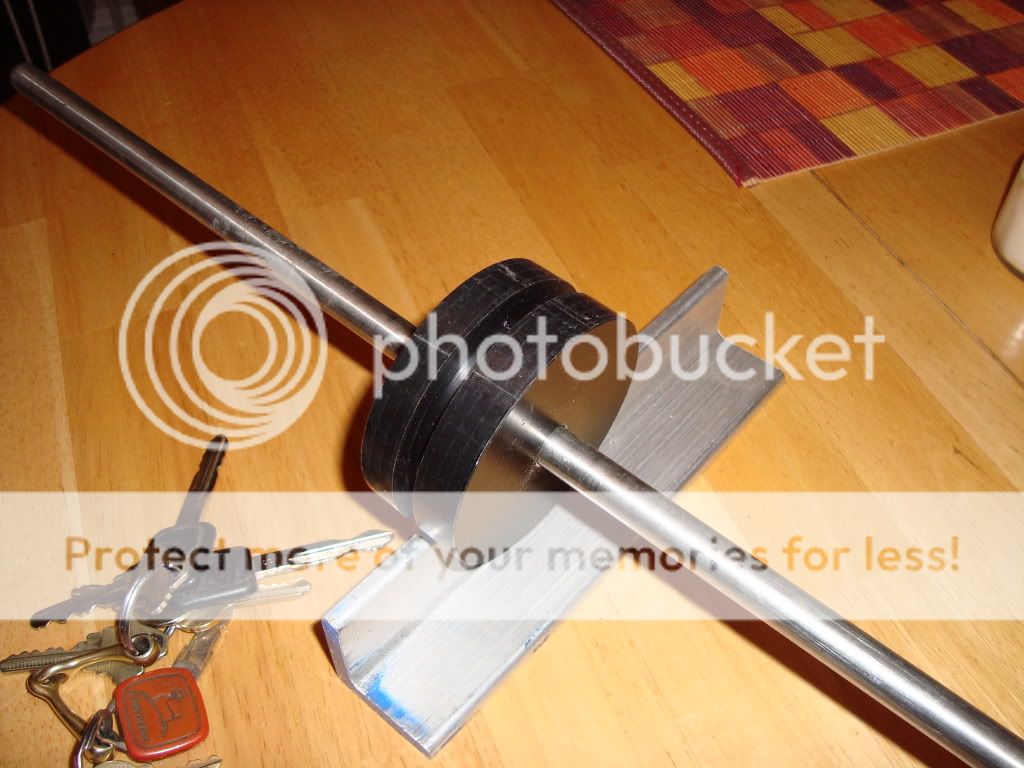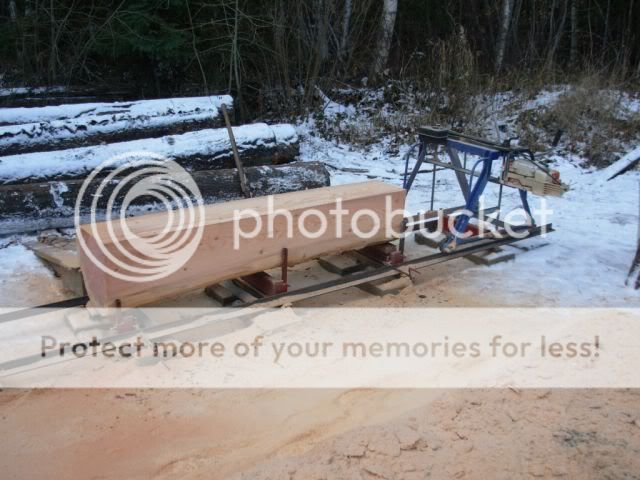I am going to make a carriage CSM and trying to do it on a budget. I have some 3" dia. delrin material that I can make wheels out of. I am thinking of a grooved wheel to ride on the leg of an angle.
I just wonder if anybody knows of a flaw in this idea such as 'they won't last' or it can break, too soft or whatever. I could see if they did bind up and quit rolling then they could 'flat spot'. They won't have any ball bearings so I will make the axles out of stainless so they won't rust up. The Delrin will slide on that good enough I believe. I can do this on the cheap so it's worth a shot.
This is a picture of the concept and an unfinished wheel. The angle it will ride on (3"x3"x1/4"?) will be steel (the aluminum one in the picture is just for concept). There is also a picture of someones mill that I am considering copying. I sure would like to find some more pictures of it and if anybody knows anything about this or any other "A-frame" styles.


I just wonder if anybody knows of a flaw in this idea such as 'they won't last' or it can break, too soft or whatever. I could see if they did bind up and quit rolling then they could 'flat spot'. They won't have any ball bearings so I will make the axles out of stainless so they won't rust up. The Delrin will slide on that good enough I believe. I can do this on the cheap so it's worth a shot.
This is a picture of the concept and an unfinished wheel. The angle it will ride on (3"x3"x1/4"?) will be steel (the aluminum one in the picture is just for concept). There is also a picture of someones mill that I am considering copying. I sure would like to find some more pictures of it and if anybody knows anything about this or any other "A-frame" styles.






